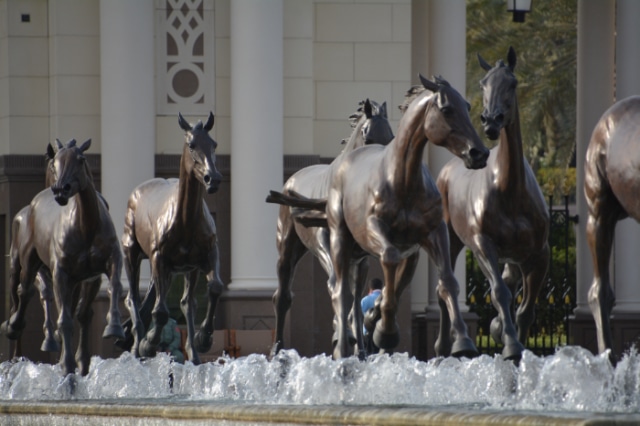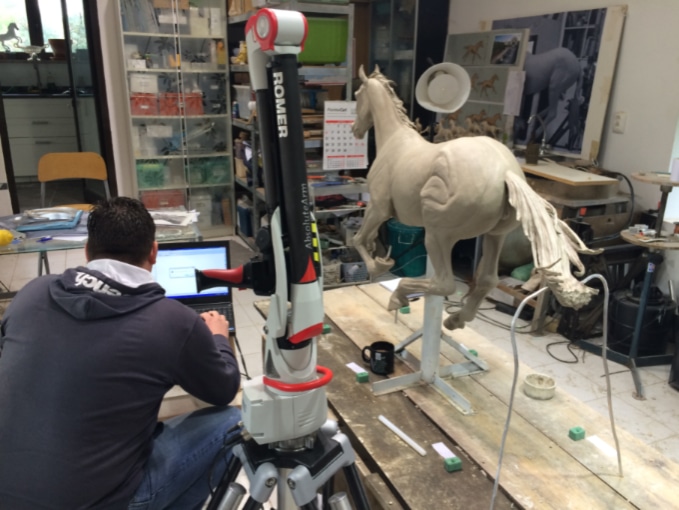What is Modern Sculpture?
The period beginning in 1850 and continuing until 1960 is known as the modern period of sculpture. The French sculptor Auguste Rodin is credited with initiating the early modern period of sculpture, which spans the years 1850 to 1900. During this time period, sculptures depicted human life and appeared incomplete.
Different Types of Sculpture Techniques
Generally, there are thought to be four main types of sculpture techniques: assembling, modelling, carving and casting.
Casting
Moulded forms and materials that have been cured are required in order to create cast sculptures. This technique entails modelling a material of choice, and then casting the resulting form in order to produce a robust and long-lasting piece of work. The sculpted mould is filled with heated liquids, including metals such as bronze, so that it can take on the specific form that was intended for it.

Modelling
Sculpting through the modelling technique is an additive process. Modelled sculptures are created when a soft or malleable material (such as clay, plaster, or wax) is built up (sometimes over an armature) and shaped to create a form. Modelled sculptures are among the oldest among the many kinds of artwork created by hand. Artists that use this technique will often model a maquette which, now in the modern-day, would then be 3D scanned and then scaled up in CAD software. The patterns would be machined and then used for casting.
Carving
The method of carving can be either direct or indirect. Both of these techniques are considered subtractive processes because they involve the systematic removal of materials beginning on the surface and working their way inward. Chiselling or whittling the material into the desired shape typically requires the use of a specialised hand tool that artists carry with them. Their ideas determine which tools and media are appropriate for the technique that is being used.
Assembling
The method of sculpting known as "assembling" is an example of an additive production process that has become more prevalent in modern times. Sculptors will collect a variety of materials before adding them to their pieces so that they can shape and form them. Sculptures that are assembled typically contain scrap metal or a variety of found objects that add supplementary texture and an additional dimension of abstraction.

Reverse Engineering in sculpting
The idea behind reverse engineering is to use 3D scanning equipment to collect the dimensional information of an object, such as a sculpture, and convert it into a digital CAD model which can then be manipulated and altered. Reverse engineering is a technique that can be utilised in a number of different aspects of this process, including the analysis, development, and creation of new products. We are all aware that traditional handwork is still used in the manufacturing and development of many sculptures. In addition, it will be restricted to some degree due to the personnel's antiquated way of thinking about design. The use of the idea of reverse engineering as a solution to the issue of incomplete innovation in the design of contemporary sculpture products has the potential to completely improve the situation.
3D Scanning
3D scanning can be a powerful tool for artists. It is used for a multitude of data capture, analysis and verification tasks. From scanning a sculptor’s maquette and scaling the project up to the desired size to create a new sculpture to scanning one element of an existing sculpture to conduct a repair. This state-of-the-art technology provides the ability to capture exceptionally accurate measurements, regardless of the environment.
TALK TO THE EXPERTS
Established in 1985, we have built a strong reputation for manufacturing excellent products within tight timescales and to extremely high tolerances. In order to achieve this, we use state of the art equipment and traditional, time honoured processes and skills.
Call us on:
01455 890 571
Email us at:
sales@pentapatterns.co.uk